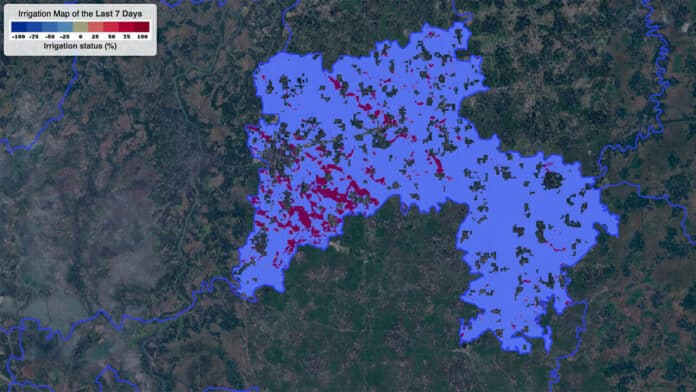Bangladesh is one of the most densely populated nations in the world. Nearly half of its residents work on or live around farms, and rice crops are critical to feeding that population.
Cultivating rice crops requires a significant amount of water and fuel. Especially during the country’s dry season from January to June, farmers typically pump groundwater from aquifers, which is a costly process. Also, it usually requires burning fuels that release carbon dioxide into the atmosphere.
To address these challenges, researchers from the University of Washington and Bangladesh’s Ministry of Agriculture joined forces to develop a system that uses data from NASA and its partners to help the country’s rice farmers.
Called Integrated Rice Advisory System (IRAS), the system analyzes satellite data to deliver information to the farmers about how much water they are using, how much they have, and how much their crops need. The IRAS (Integrated Rice Advisory System) program is funded by Bangladesh’s Department of Agricultural Extension.
“To create sustainable and climate-resilient agriculture for the future, we need to minimize irrigation waste and de-carbonize the production by using affordable solutions that can be scaled globally,” said Faisal Hossain, professor of civil and environmental engineering at the University of Washington and leader of IRAS.
The IRAS team estimates that the program has the potential to reduce agricultural water waste in Bangladesh by about 30%, reduce agricultural fuel consumption by 45%, save $115 million annually in fuel subsidies, and reduce carbon emissions by 300,000 tons per year.
IRAS works by combining specific satellite data on water use, precipitation, and weather forecasts with crop water demand characteristics to craft irrigation advisories for users around Bangladesh. Based on that data, the advisories inform farmers how much water they need for their crops. They can also report whether people in a region have over- or under-irrigated their fields in the past.
The data for the advisories come from the NASA/USGS Landsat mission, GPM (Global Precipitation Measurement), a joint mission of NASA and the Japan Aerospace Exploration Agency, and GFS (Global Forecast System) produced by the U.S. National Weather Service. GFS provides weekly advisories on irrigation needs to more than 10 million farmers across Bangladesh.
“The synergistic use of Landsat, GPM, and GFS can help the world become more water-efficient and energy-efficient in growing food while also becoming more affordable and convenient for farmers,” Hossain said.
Hossain and the team aim to expand the reach of IRAS in the coming years as well as to use it for other water-intensive crops, such as sugar cane. “Our hope is that this template can be applied to any region where we know what crop is being grown and what their crop water demand characteristics are,” Hossain said in a statement.
